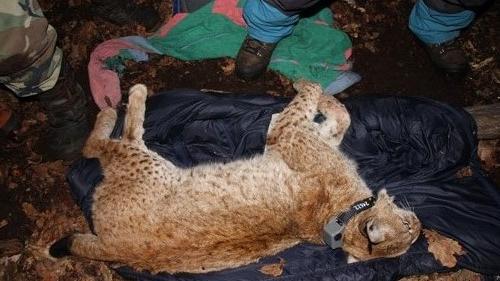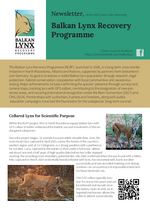The Balkan lynx - the last of its kind
Protecting a rare cross-border commuter
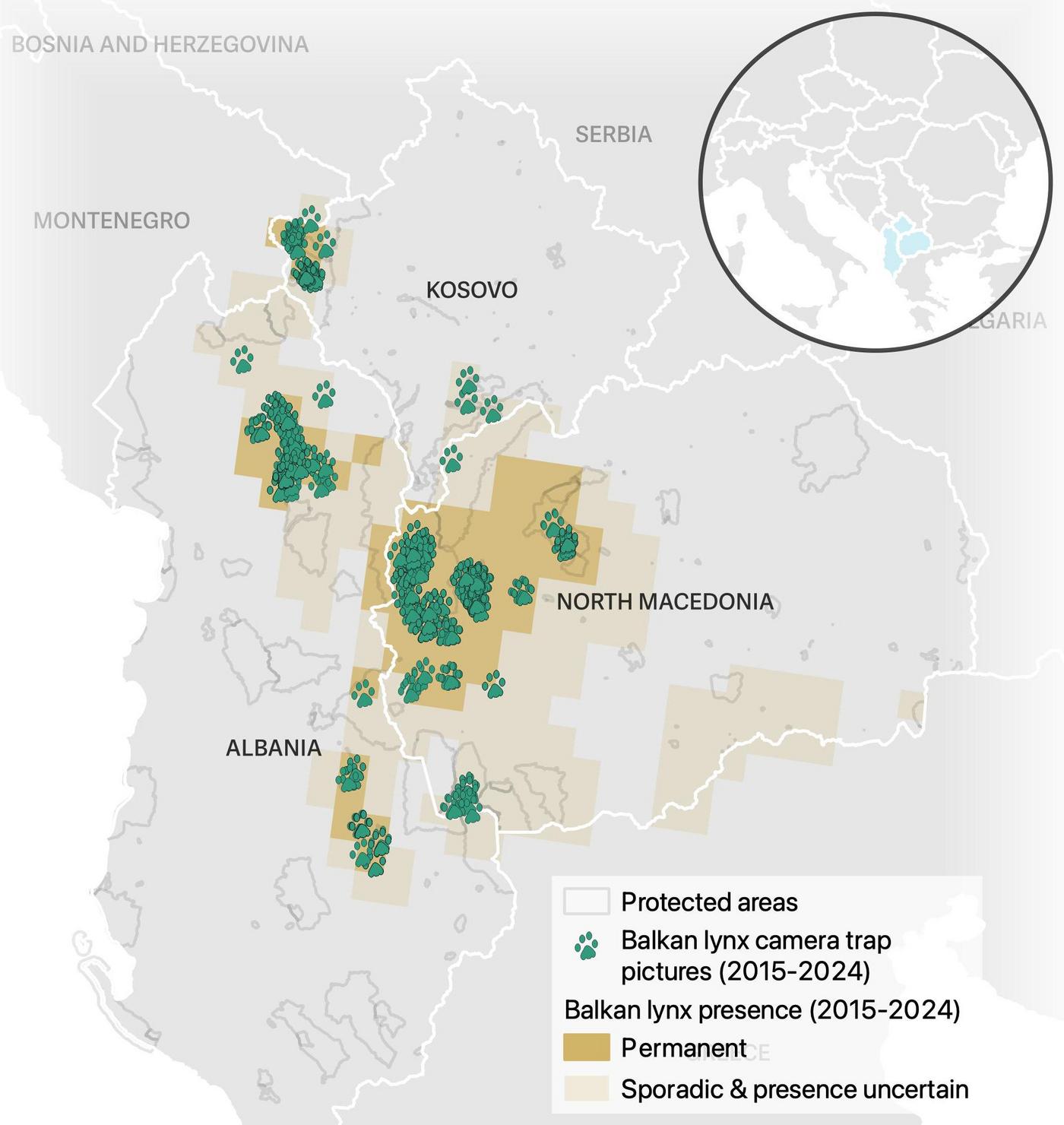

Lynx once roamed the entire Balkan Peninsula. The current range of the Balkan lynx (Lynx lynx balkanicus) has shrunk dramatically and largely corresponds with the line of the Balkan Green Belt which runs between Albania and North Macedonia as well as between Albania, Montenegro and Kosovo. Here, as part of the Balkan Lynx Recovery Programme (BLRP), EuroNatur is working with an international team to protect the lynx and its habitats. According to scientific estimates, fewer than 50 Balkan lynx are thought to roam the forests and mountains of the southern Balkans. This makes the subspecies of the Eurasian lynx one of the rarest cats on earth.
The Balkan lynx recovery program was launched in 2006 as a cross-border initiative and has developed over the years into a comprehensive program that brings together a wide variety of people: lynx conservationists and rangers, as well as hunters and foresters, farmers and tourist guides, schoolchildren and students. They are all committed to one noble cause: to save the Balkan lynx from extinction.
Living under pressure
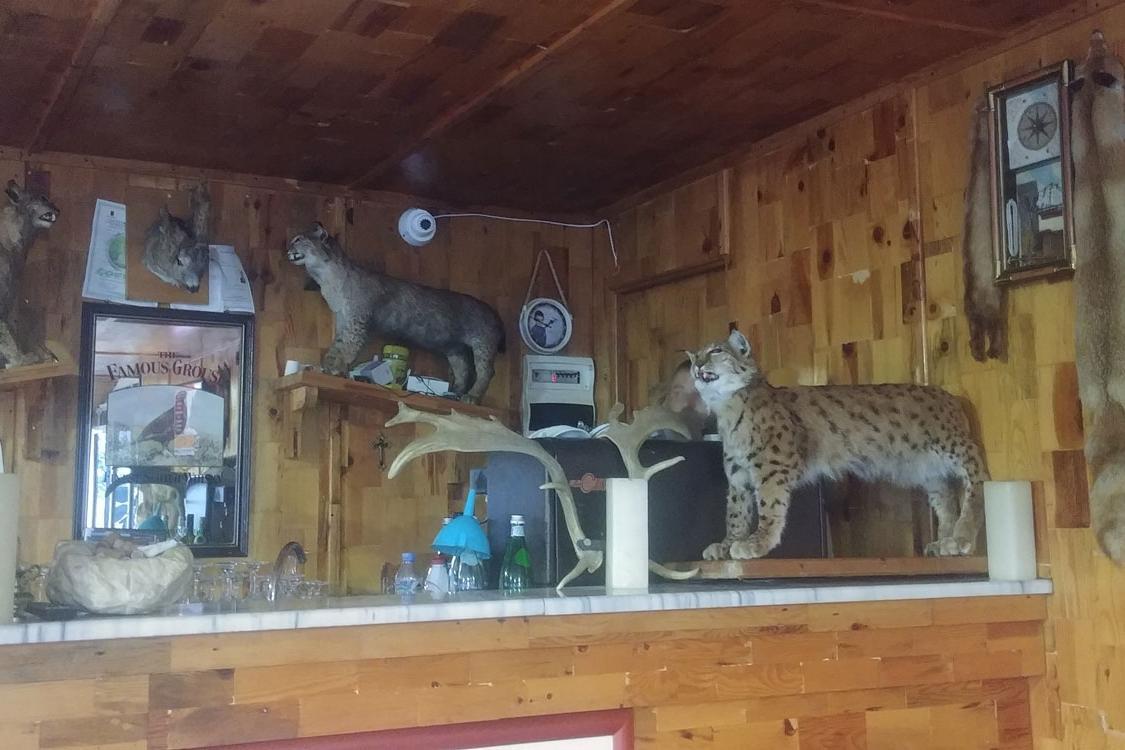
Stuffed balkan lynx in an Albanian restaurant.
© PPNEAThere are numerous threats to the Balkan lynx. The animal is facing a lack of sufficiently large and contiguous habitats due to the overuse of forests for firewood and timber production. This is also resulting in a shortage of prey, and the situation is being further exacerbated by the mostly illegal killing of already diminished wildlife populations. However, the lynx too is frequently falling victim to poachers looking for rare trophies or who blame the predatory cat for the deaths of domestic animals.
Balkan lynx newsletter
BLRP-Newsletter_December 2025
(3 MB)What EuroNatur and its partners are doing to protect the Balkan lynx and what we have been able to achieve together:
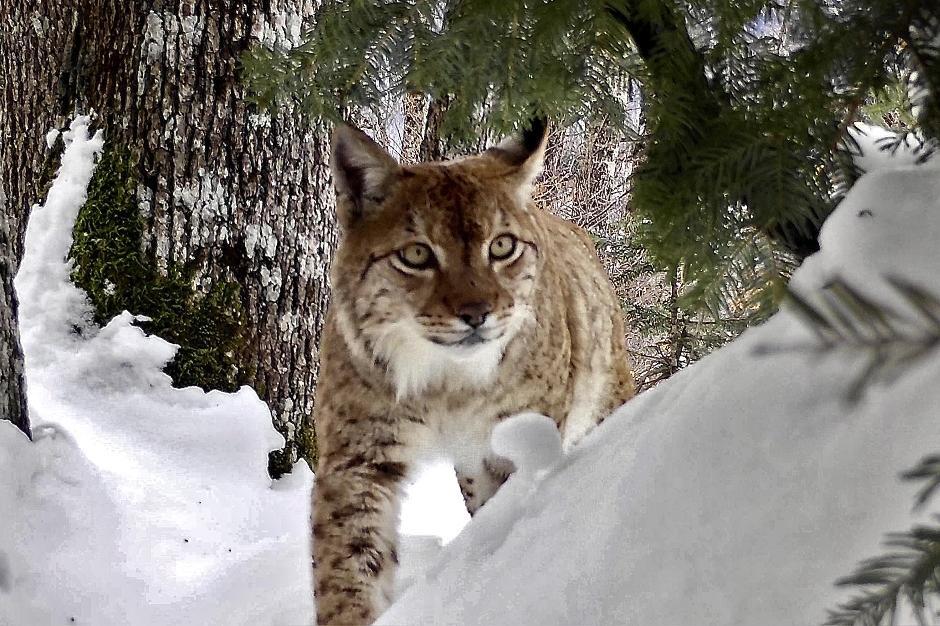
This Balkan lynx was caught on camera in Kosovo.
© ERA- Creating a sound knowledge base: Reliable information on the habitat, distribution and prevalence of the Balkan lynx and its prey is scarce. We are funding the acquisition of camera traps that will provide valuable data on these secretive cats. In addition, we have been able to capture several lynx and fit them with transmitters. Since doing so, we have learned more about the territorial behaviour of these endangered animals and can provide concrete information about the habitats which therefore need to be protected.

The lynx as a topic in biology lessons: Our Albanian partners from PPNEA visited school classes on International Lynx Day 2024.
© PPNEA
The wall of the comedy theater in Skopje has been adorned with a mural since June 2025.
© MES- Inspiring children: Thanks to an educational programme which started in 2015 and addresses the threats faced by the Balkan Lynx, more than 2,000 schoolchildren in North Macedonia had been reached by the end of 2018. To do this, our partners visited many schools, delivering clear and engaging presentations focusing on the reasons for the lynx’s endangered status. The educational campaign was a great success and has been extended to Albania and Kosovo.
- Raising awareness through art: To draw attention to the critical situation of the endangered Balkan lynx, our partners have launched art campaigns in the heart of Tirana and in Skopje, the capital of North Macedonia. Artists have created lifelike murals at a school, respectively a theater and information boards have been installed. Our partners hope that these measures will raise awareness of the Balkan lynx and encourage the population to get involved in protecting this rare cat.
- Increasing protection status: We were able to get the Balkan lynx recognised as a separate sub-species in 2015, and the animal has been placed on the Red List of endangered species. In addition, the Balkan lynx has been included in the list for the protection of migratory species (Bonn Convention) since February 2024. The application was submitted by the government of North Macedonia and supported by the Albanian government - mainly because our partners in the respective countries lobbied for this.All this togehter will enable conservation programmes to be more effective.
Partners: MES, PPNEA, ERA, Kora
Funding: Hans Wilsdorf Foundation, EuroNatur donors and sponsors
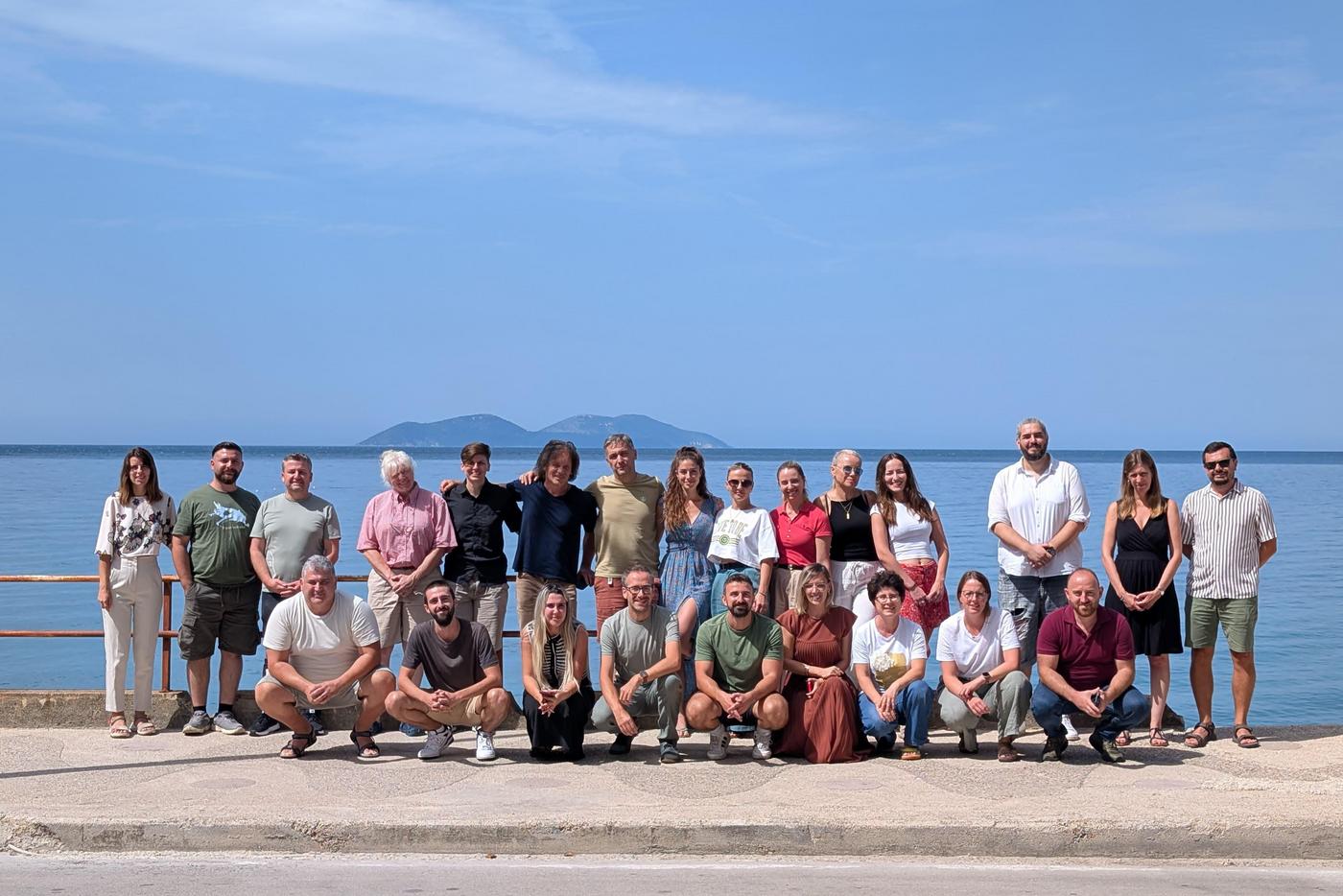
Lynx experts from five different countries: The BLRP Team at the international partner meeting in Vlorë, Albania in September 2025
© PPNEA


